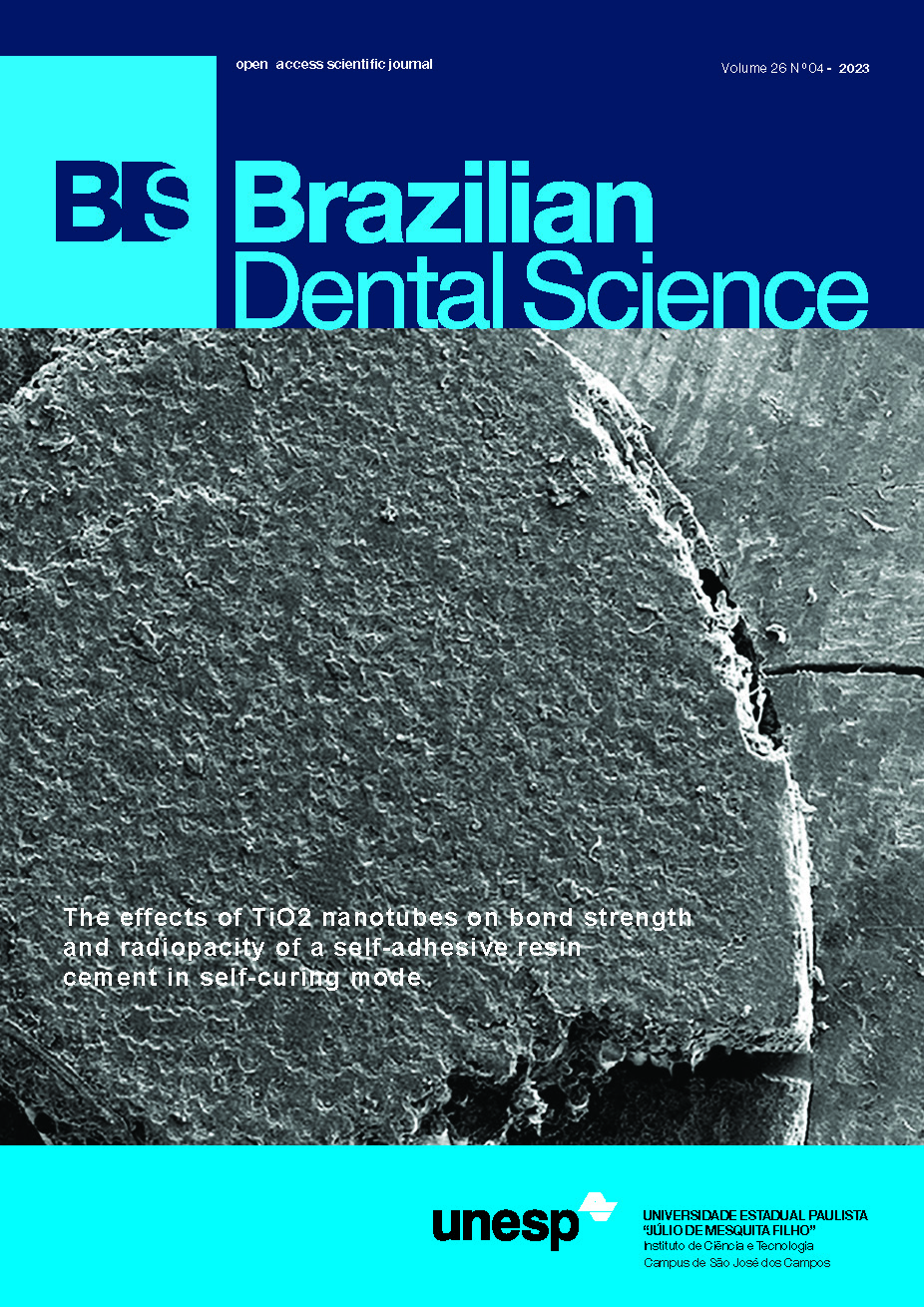The effects of TiO2 nanotubes on bond strength and radiopacity of a self-adhesive resin cement in self-curing mode
DOI:
https://doi.org/10.4322/bds.2023.e3909Abstract
Objective: The aim of this in vitro study was to analyze the influence of the titanium dioxide nanotubes in a self-cure mode polymerization of a dual resin luting agent through push out bond strength and radiopacity tests. Material and Methods: After mixed with a commercial dual self-adhesive resin cement, three concentrations of titanium dioxide nanotubes (0.3, 0.6, and 0.9% by weight) were analyzed in self-curing mode. The bond strength to bovine root dentin and fiberglass posts was assessed with the push out bond strength test and was evaluated in three thirds (cervical, middle and apical) (n=10), followed by failure mode analysis (SEM), and the ISO standard 9917-2 was followed for radiopacity test (n=10). Data were statistically analyzed by one-way ANOVA test, followed by Tukey’s test (alpha=0.05). Results: Reinforced self-adhesive resin cement with 0.6% titanium dioxide nanotubes showed significant difference compared to the control group for push out test (p=0.00158). The modified groups did not show significant difference among thirds (p=0.782). Radiopacity showed higher value for group with 0.9% titanium dioxide nanotubes in comparison with control group (p<0.001). Conclusion: The addition of titanium dioxide nanotubes to a self-adhesive resin cement increased the bond strength to dentin and radiopacity values in the self-cure polymerization mode.
KEYWORDS
Bond strength; Dental cements; Fiber post; Nanotubes; Radiopacity; Titanium.
Downloads
Published
How to Cite
Issue
Section
License
Brazilian Dental Science uses the Creative Commons (CC-BY 4.0) license, thus preserving the integrity of articles in an open access environment. The journal allows the author to retain publishing rights without restrictions.
=================




























